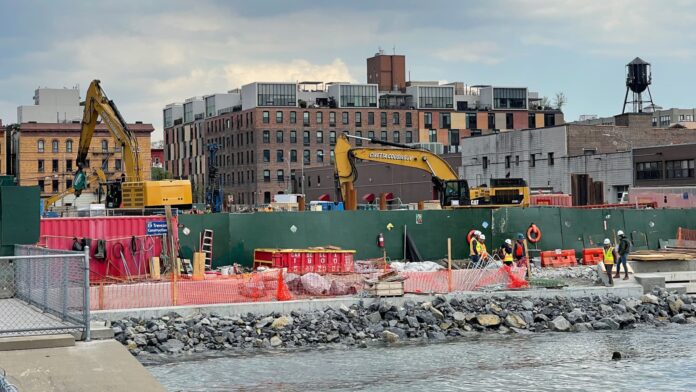On the banks of the East River in Brooklyn, the cranes have not yet arrived at the site. Instead, massive drills are scattered across the city block, drilling 320 boreholes nearly 500 feet into the ground. When construction is complete in 2025, the site will house the largest geothermal apartment complex in the United States.
Geothermal heating and cooling has been around for some time but is generally used only for single homes or small buildings. The geothermal system is often not located at the same location as the building. But Lendlease, an Australia-based developer, is now trialling large-scale geothermal energy in Brooklyn in a test that could end up being a blueprint for net-zero living.
“We will use it for everything from a swimming pool heated by geothermal energy. We will use it for all hot water in the building and also for heating and cooling, which heat pumps will do in each apartment,” explained Scott Walsh, Development Manager at Lendlease.
Here’s how it works: water below the frost line has a constant temperature. By drilling and creating a circulatory system of pipes, the water is brought up through heat exchangers that can heat or cool the building all year round.
“It’s about 55 degrees once you get below the frost line and we use that constant to be cooler in the summer and warmer in the winter,” Walsh explained. “Similar to your heart and the arteries and the veins in your body.”
The project at 1 Java Street will have 834 rental units in 5 buildings, including a 37-story and a 20-story tower. Using geothermal energy will reduce greenhouse gas emissions by an estimated 53%, but it will cost about 6% more to build. Over 20 years, Walsh said, Lendlease will more than make up for that.
“As a long-time owner of an apartment building, we see this as a financially sustainable practice in addition to its sustainability,” he added.
This type of innovation is quickly becoming necessary as New York comes into force next year with new emissions sustainability standards for large buildings that require emissions reductions of 40% by 2030 and 80% by 2050. Retrofitting older buildings to comply will be incredibly expensive. This complex will be completely net zero when it opens.
















